Home>Garden Essentials>How To Eat Sunflower Seeds
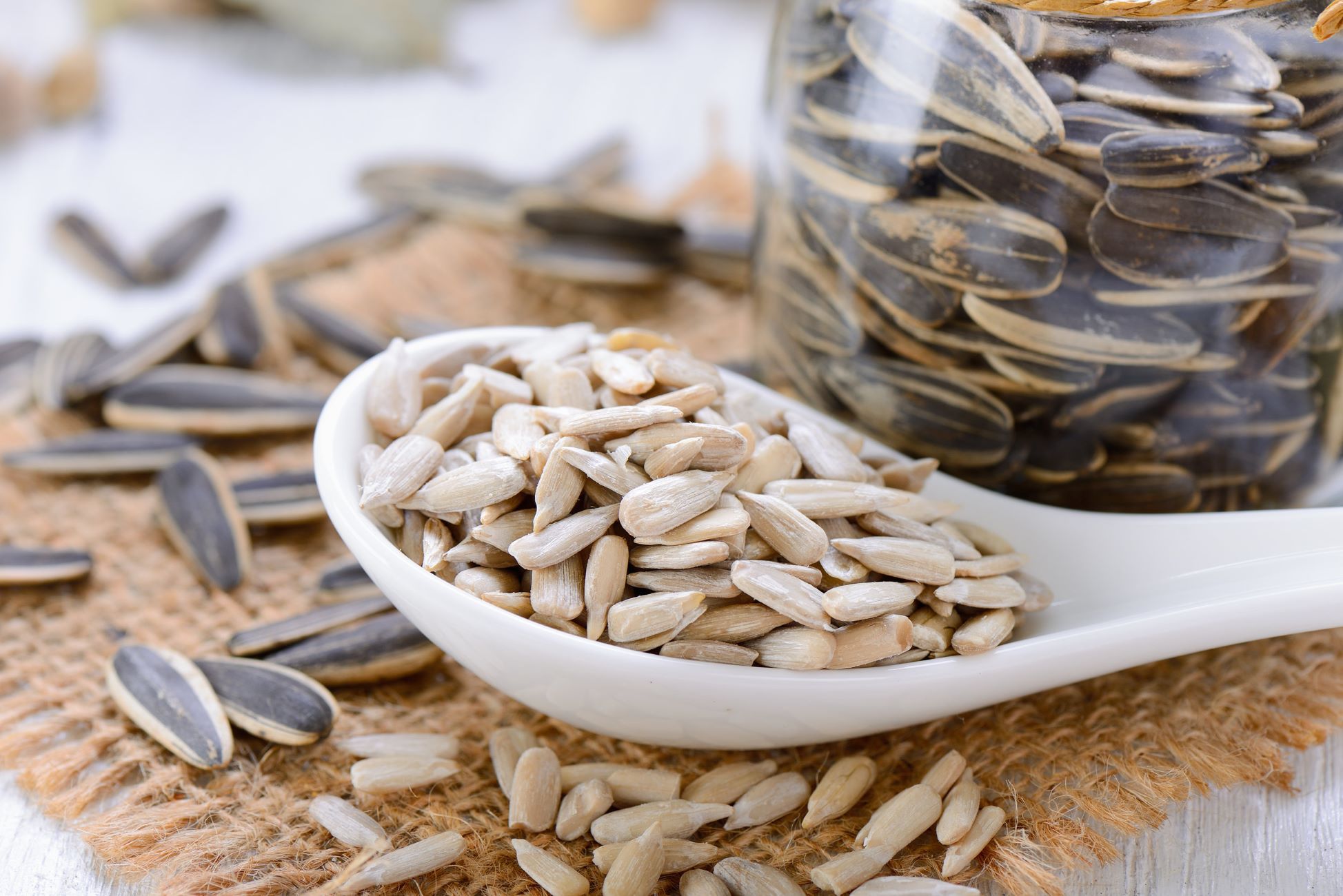

Garden Essentials
How To Eat Sunflower Seeds
Modified: March 24, 2024
Learn how to eat sunflower seeds from your own garden without any hassle. Our step-by-step guide will help you enjoy the healthy and delicious benefits of these nutritious seeds.
(Many of the links in this article redirect to a specific reviewed product. Your purchase of these products through affiliate links helps to generate commission for Storables.com, at no extra cost. Learn more)
Introduction
Gardening enthusiasts and health-conscious individuals are often captivated by the beauty and nutritional benefits of sunflower plants. But did you know that the seeds of these vibrant flowers offer a multitude of health perks as well? Sunflower seeds are not only a tasty snack but also a nutritional powerhouse packed with essential nutrients.
In this article, we’ll explore the various health benefits of sunflower seeds, guide you on how to choose the right type of seeds, introduce you to popular ways of incorporating them into your daily diet, and provide a step-by-step guide on how to eat sunflower seeds. By the end, you’ll have all the knowledge you need to enjoy this snack while reaping its many benefits.
So, grab a handful of sunflower seeds and let’s dive in!
Key Takeaways:
- Sunflower seeds offer a multitude of health benefits, from supporting heart health to boosting energy levels, making them a nutritious and delicious addition to your diet.
- When choosing sunflower seeds, consider factors such as whether you prefer shelled or unshelled seeds, raw or roasted, and salted or unsalted, and be mindful of potential side effects such as allergies and calorie content.
Read more: How To Eat A Sunflower Seed
Health Benefits of Sunflower Seeds
Sunflower seeds are not only a delicious snack but also offer a wide array of health benefits. Packed with essential nutrients, they can contribute to overall well-being and help prevent various diseases. Let’s take a closer look at some of the key health benefits of sunflower seeds:
- High in Nutrients: Sunflower seeds are rich in vitamins and minerals, including vitamin E, magnesium, selenium, and phosphorus. These nutrients play crucial roles in supporting immune function, promoting heart health, and maintaining healthy bones and teeth.
- Excellent Source of Healthy Fats: Sunflower seeds are a great source of healthy fats, particularly monounsaturated and polyunsaturated fats. These fats are essential for proper brain function, hormone production, and maintaining healthy skin and hair.
- Rich in Antioxidants: Sunflower seeds are packed with antioxidants, including vitamin E and selenium. Antioxidants help protect your cells from damage caused by free radicals, reducing the risk of chronic diseases such as heart disease and cancer.
- Supports Heart Health: The combination of healthy fats, fiber, and antioxidants in sunflower seeds makes them beneficial for heart health. They can help lower cholesterol levels, reduce inflammation, and improve blood flow, thus reducing the risk of heart disease.
- Boosts Energy Levels: Sunflower seeds are a rich source of protein, fiber, and healthy fats, providing a sustainable and steady release of energy. Snacking on these seeds can help maintain your energy levels throughout the day and keep hunger at bay.
- Aids in Weight Management: Despite being calorie-dense, sunflower seeds can actually support weight management. The combination of fiber, protein, and healthy fats helps increase satiety and reduce cravings, making them a satisfying and nutritious snack option.
- Supports Brain Health: The vitamin E content in sunflower seeds is beneficial for brain health, as it acts as an antioxidant and helps protect the brain cells from oxidative stress and aging. Including sunflower seeds in your diet may contribute to better cognitive function and memory.
- May Reduce Inflammation: Inflammation is associated with various chronic diseases. Sunflower seeds contain compounds like vitamin E and phenolic acids that have anti-inflammatory properties. Regular consumption of these seeds may help reduce inflammation in the body.
With all these health benefits, it’s no wonder that sunflower seeds are hailed as a nutritious addition to any diet. Now that we understand the incredible advantages they offer, let’s move on to choosing the right type of sunflower seeds.
Choosing the Right Type of Sunflower Seeds
When it comes to choosing sunflower seeds, there are a few factors to consider. Here are some tips to help you select the right type of sunflower seeds:
- Raw vs. Roasted: Sunflower seeds are available in both raw and roasted forms. Raw seeds maintain their natural nutrient content but can be more difficult to digest. Roasted seeds, on the other hand, offer a crispier texture and slightly altered flavor. Consider your preference and any dietary restrictions when deciding which option to choose.
- Shelled vs. Unshelled: Sunflower seeds are sold both in their shell and without their shell. Shelled seeds are more convenient to consume, making them a popular choice for snacking. Unshelled seeds, on the other hand, require a bit of effort to crack open but can be a fun and interactive option, especially for children.
- Organic vs. Conventional: Consider opting for organic sunflower seeds whenever possible, as they are grown without the use of synthetic pesticides or fertilizers. Organic seeds are not only better for your health but also for the environment.
- Salt or No Salt: Salted sunflower seeds are a common variety available in stores. While they can be a flavorful choice, it’s important to be mindful of your salt intake. If you are watching your sodium levels, opt for unsalted sunflower seeds or those with minimal salt content.
- Quality and Freshness: Look for sunflower seeds that are plump and firm. Avoid those that appear shriveled or discolored, as they may be stale or of lower quality. Check the expiration date on the package to ensure freshness.
It’s worth noting that sunflower seeds are available in various flavors and varieties, such as BBQ, honey roasted, or dill pickle. These options can add some extra taste and excitement to your snacking experience. Ultimately, choose the type of sunflower seeds that align with your taste preferences and dietary needs.
Now that you know how to select the right sunflower seeds, let’s explore some popular ways to incorporate them into your daily diet.
Popular Ways to Eat Sunflower Seeds
Sunflower seeds are incredibly versatile and can be enjoyed in a variety of ways. Whether you prefer them as a standalone snack or as an ingredient in your favorite recipes, here are some popular options to consider:
- Raw Snacking: One of the simplest and most convenient ways to enjoy sunflower seeds is to snack on them straight from the bag. Their nutty and slightly sweet flavor makes them a tasty and satisfying snack for any time of the day. Just make sure to choose shelled or unshelled seeds based on your preference.
- Roasted and Salted: If you enjoy a savory snack, consider roasting sunflower seeds with a bit of salt. Spread the seeds on a baking sheet and bake them in the oven until they turn golden brown. This method enhances their natural flavor and gives them a satisfying crunch.
- Trail Mixes: Sunflower seeds make a great addition to homemade trail mix. Combine them with dried fruits, nuts, and perhaps some chocolate or coconut flakes for a delicious and nutritious snack on the go. Feel free to customize your trail mix according to your preferences.
- Baking: Sunflower seeds can add a delightful crunch and nutty flavor to baked goods. Sprinkle them on top of bread, muffins, or cookies before baking for an added texture and taste. You can also incorporate ground sunflower seeds into your favorite pie crust or granola bar recipes.
- Sprinkled on Salads: Adding sunflower seeds to your salads can bring a satisfying bite and a nutritional boost. Sprinkle them on top of green salads, grain bowls, or even roasted vegetable dishes for added texture and a mild nutty flavor. You can also use them as a garnish for soups or stews.
- As a Topping: Give your breakfast or snack bowls a crunchy twist by adding sunflower seeds on top. Whether it’s yogurt, oatmeal, smoothie bowls, or even ice cream, the seeds will provide an interesting texture and a burst of flavor.
- Ground into a Butter: Similar to peanuts or almonds, sunflower seeds can be processed into a creamy and nutritious butter. Simply blend roasted sunflower seeds in a food processor until smooth. Spread the sunflower seed butter on toast, use it as a dip for fruits or vegetables, or incorporate it into your favorite recipes.
These are just a few suggestions to get you started, but feel free to experiment and find your own preferred ways to enjoy the versatility of sunflower seeds. Now that you know how to incorporate them into your diet, let’s move on to the step-by-step guide on how to eat sunflower seeds.
When eating sunflower seeds, crack the shell with your teeth and use your tongue to remove the seed. Spit out the shell and enjoy the nutritious seed inside.
Step-by-step Guide on How to Eat Sunflower Seeds
While eating sunflower seeds may seem straightforward, there is a technique to it if you want to fully enjoy the experience while avoiding any unnecessary mess. Follow this step-by-step guide on how to eat sunflower seeds:
- Choose Your Seeds: Select the type of sunflower seeds that suits your preference, whether it’s shelled or unshelled, salted or unsalted.
- Crack Open the Shell (If Applicable): If you chose unshelled sunflower seeds, hold the seed between your thumb and forefinger. Place it in your mouth, gently bite down, and crack open the shell to expose the kernel inside without removing the entire shell.
- Remove the Kernel: Once you’ve cracked the shell, use your tongue to remove the kernel from the shell. You can do this by applying a bit of pressure against the shell or scraping it with your teeth.
- Enjoy the Kernel: Once you have the kernel separated from the shell, savor the nutty flavor and enjoy the richness of the sunflower seed. You can chew it thoroughly before swallowing or keep it on one side of your mouth to slowly release the flavor.
- Discard the Shells: If you’re eating unshelled sunflower seeds, discard the empty shells in a designated container or disposal bag. This helps keep your eating area tidy.
- Repeat and Enjoy: Continue the process with each seed, cracking open the shell, removing the kernel, and discarding the shells as you go. Take your time to appreciate the taste and texture of each one.
Remember, eating sunflower seeds is meant to be a leisurely and enjoyable experience. Take breaks in between, sip on some water if needed, and have a napkin handy to wipe your hands. Also, be mindful of your surroundings and avoid spitting the shells in inappropriate places, especially if you’re in a public setting.
With this step-by-step guide, you’ll be able to eat sunflower seeds with ease and fully relish their deliciousness. Before we wrap up, let’s discuss some precautions and potential side effects to be aware of.
Read more: How Do You Eat Sunflower Seeds
Precautions and Potential Side Effects
While sunflower seeds offer numerous health benefits, it’s important to be aware of certain precautions and potential side effects:
- Allergies: Some individuals may be allergic to sunflower seeds. If you experience symptoms such as itching, swelling, or difficulty breathing after consuming sunflower seeds, seek medical attention immediately.
- Calorie Content: Sunflower seeds are calorie-dense, so it’s crucial to consume them in moderation, especially if you’re watching your calorie intake or trying to manage your weight. Portion control is key.
- Phytic Acid Content: Sunflower seeds contain phytic acid, which can hinder the absorption of certain minerals like iron and zinc. If you consume large amounts of sunflower seeds regularly, it’s important to ensure a balanced diet and consider other sources of these minerals.
- Seed Allergens: Some individuals may also be allergic to other seeds, such as sesame or mustard seeds. If you have known seed allergies, it’s advisable to consult with a healthcare professional before incorporating sunflower seeds into your diet.
- Sodium Content: If you opt for salted sunflower seeds, be mindful of your sodium intake, especially if you have high blood pressure or kidney issues. Choose unsalted varieties if you need to limit your sodium consumption.
- Digestive Discomfort: Eating large quantities of sunflower seeds, especially without drinking enough fluids, can sometimes cause digestive discomfort or constipation. Stay hydrated and consume them in moderation to minimize any discomfort.
- Storage: To maintain freshness, store sunflower seeds in an airtight container in a cool and dry place. Proper storage prevents rancidity and maintains their quality.
As with any food, it’s essential to listen to your body and make choices that align with your individual health needs and preferences. If you have any concerns or pre-existing health conditions, consult with a healthcare professional or a registered dietitian for personalized advice.
By being aware of these precautions and potential side effects, you can enjoy sunflower seeds as part of a balanced and healthy diet. Now that you have a comprehensive understanding of sunflower seeds, their health benefits, how to choose the right type, and various ways to enjoy them, you can confidently incorporate them into your daily routine.
So go ahead, grab a pack of sunflower seeds, crack open the shells, and relish the goodness that these nutritious seeds offer.
Conclusion
Sunflower seeds are not just a beautiful addition to any garden; they are also a valuable source of nutrition and health benefits. Packed with essential nutrients, these seeds offer a wide array of advantages, ranging from supporting heart health and boosting energy levels to aiding in weight management and promoting brain health.
When choosing sunflower seeds, consider factors such as whether you prefer shelled or unshelled seeds, raw or roasted, and salted or unsalted. Opting for organic varieties can also contribute to a healthier lifestyle and a more sustainable environment.
There are countless ways to enjoy sunflower seeds, whether as a convenient and nutritious snack, added to trail mixes, baked into goods, or sprinkled on salads and bowls. The step-by-step guide provided in this article ensures that you can savor the flavor and texture of sunflower seeds with ease.
However, it’s essential to remember some precautions and potential side effects, such as allergies, calorie content, and the presence of phytic acid. Moderation, portion control, and awareness of your individual health needs are key when incorporating sunflower seeds into your diet.
By understanding the health benefits, choosing the right type of seeds, exploring different ways to consume them, and taking necessary precautions, you can fully enjoy the goodness and taste that sunflower seeds offer.
So, the next time you appreciate the vibrant beauty of sunflowers in your garden, remember that beyond their aesthetic appeal, their seeds hold a treasure trove of health benefits. Grab a handful of sunflower seeds, crack open the shells, and embark on a journey of taste, nutrition, and wellness.
Frequently Asked Questions about How To Eat Sunflower Seeds
Was this page helpful?
At Storables.com, we guarantee accurate and reliable information. Our content, validated by Expert Board Contributors, is crafted following stringent Editorial Policies. We're committed to providing you with well-researched, expert-backed insights for all your informational needs.
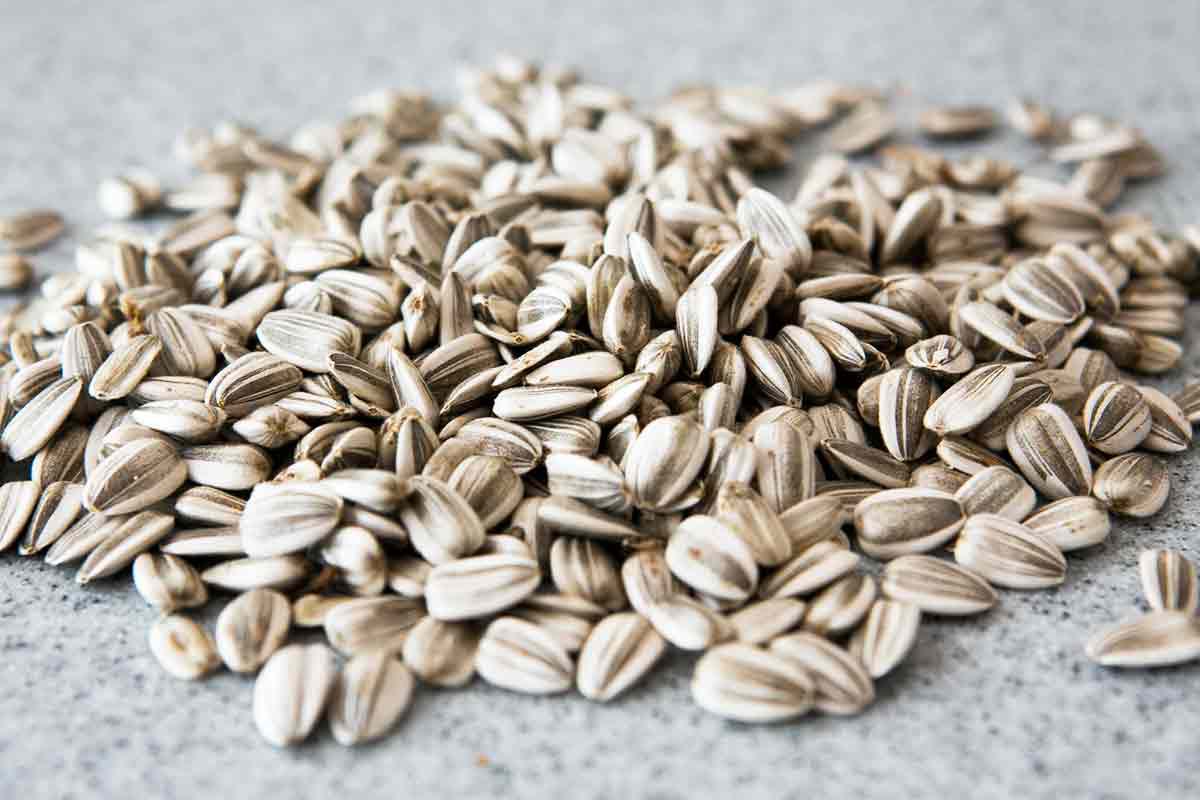

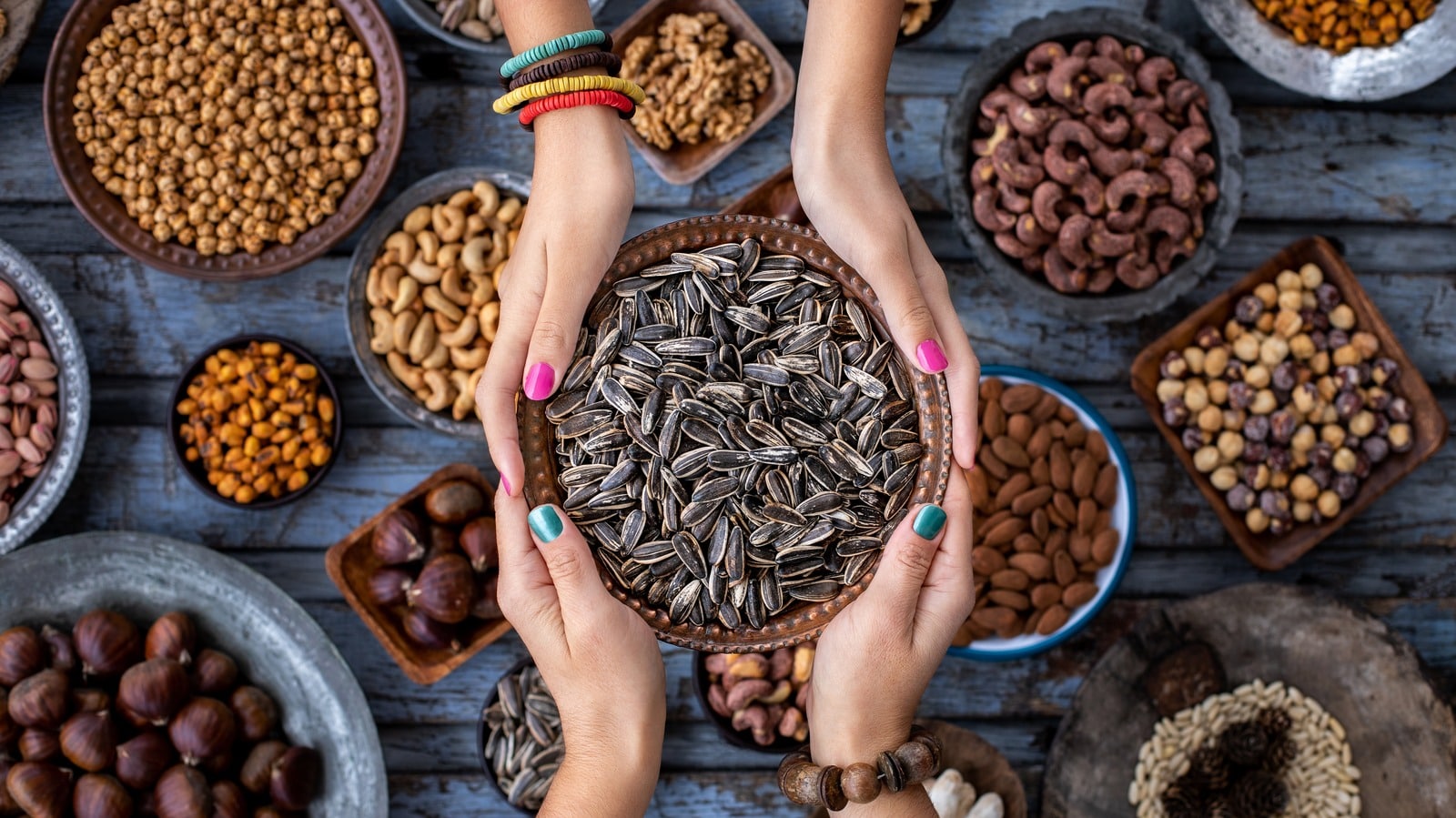
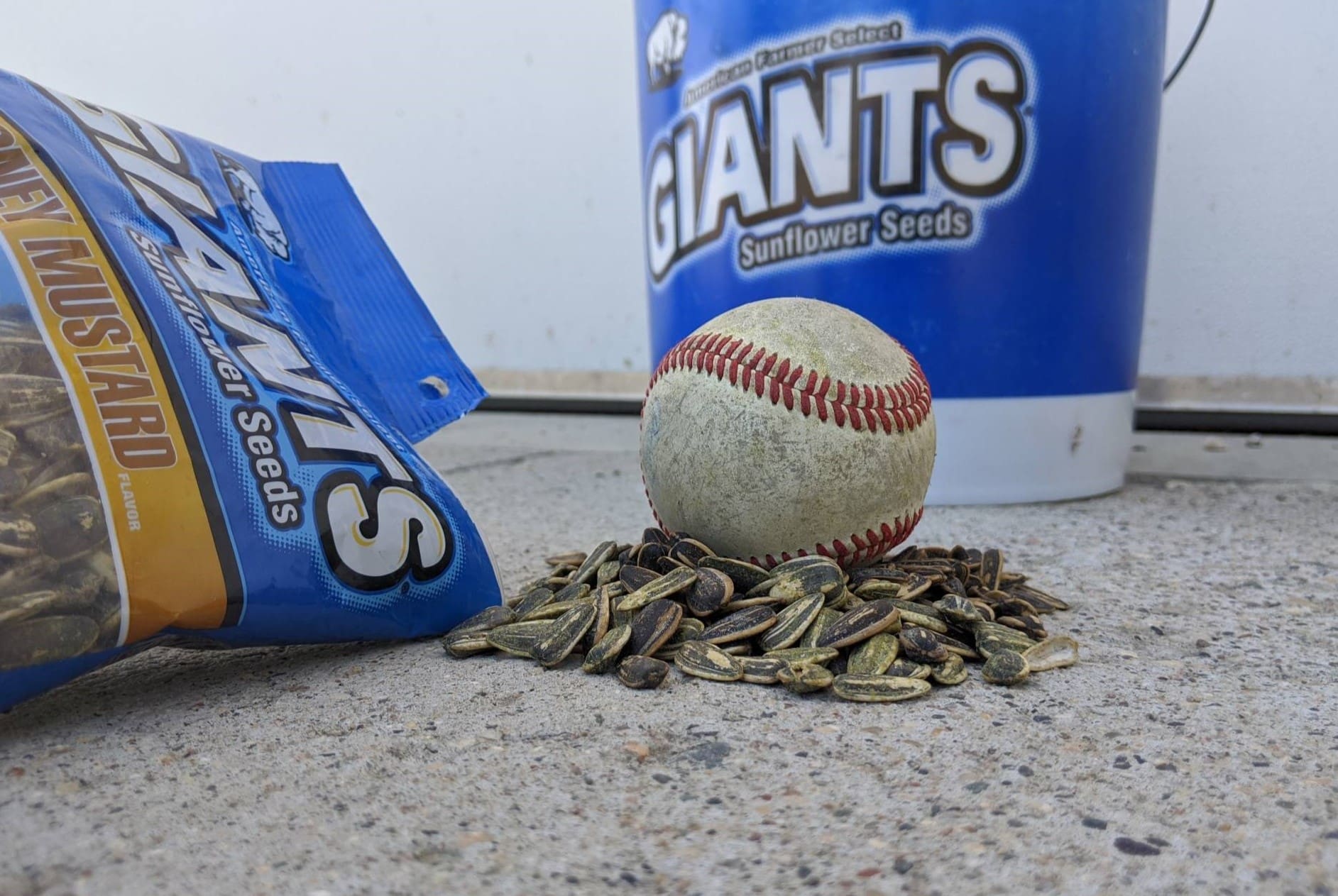

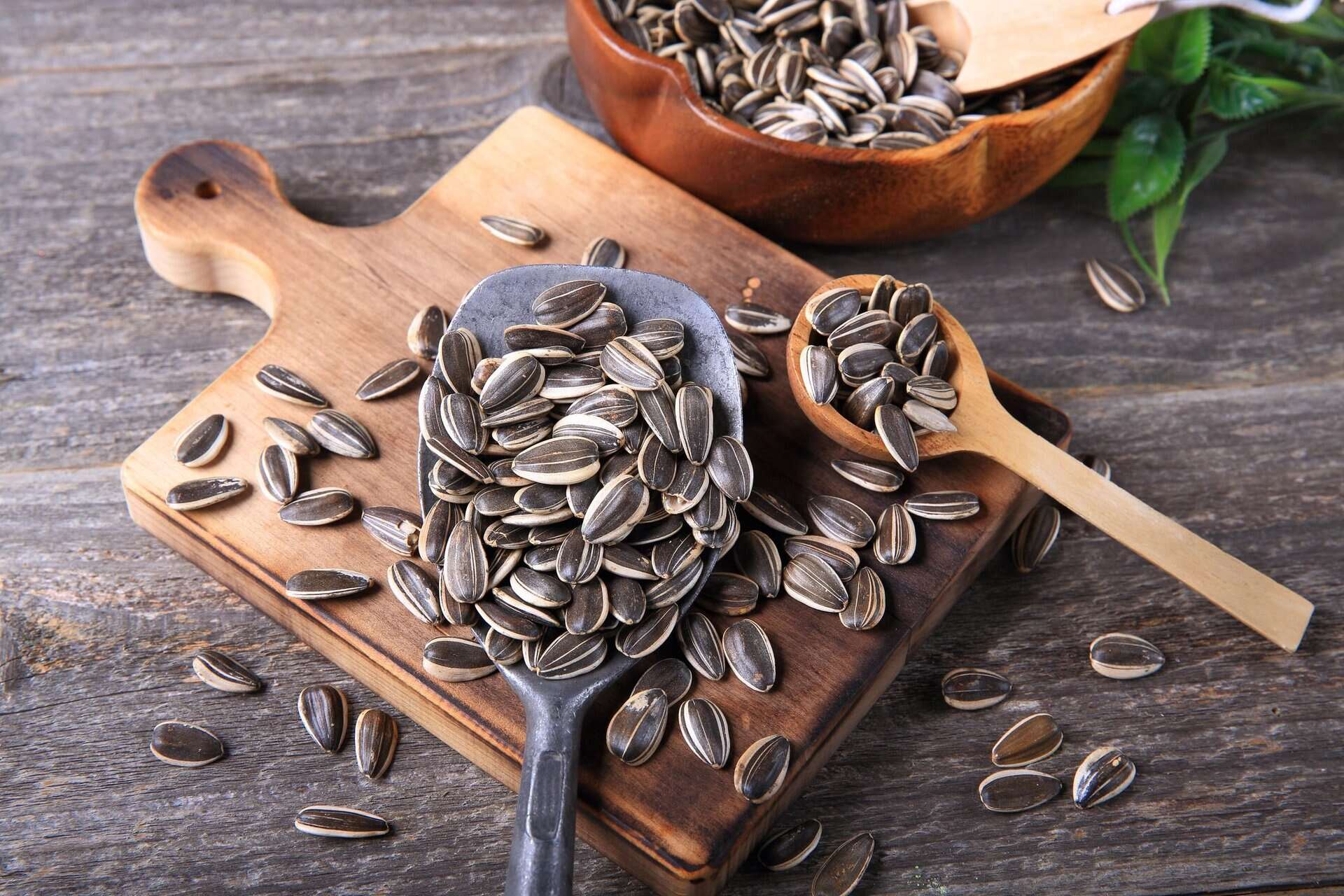
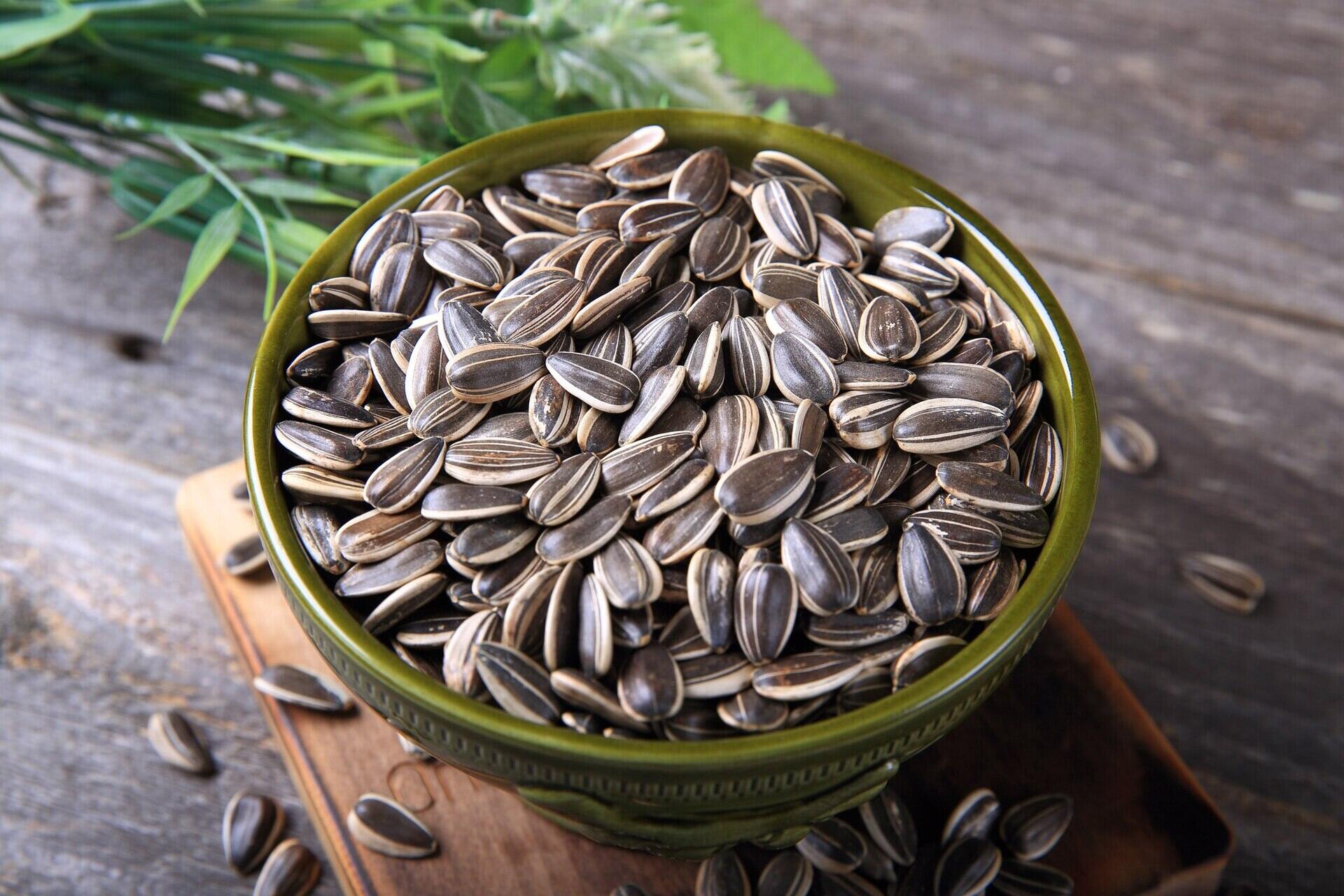
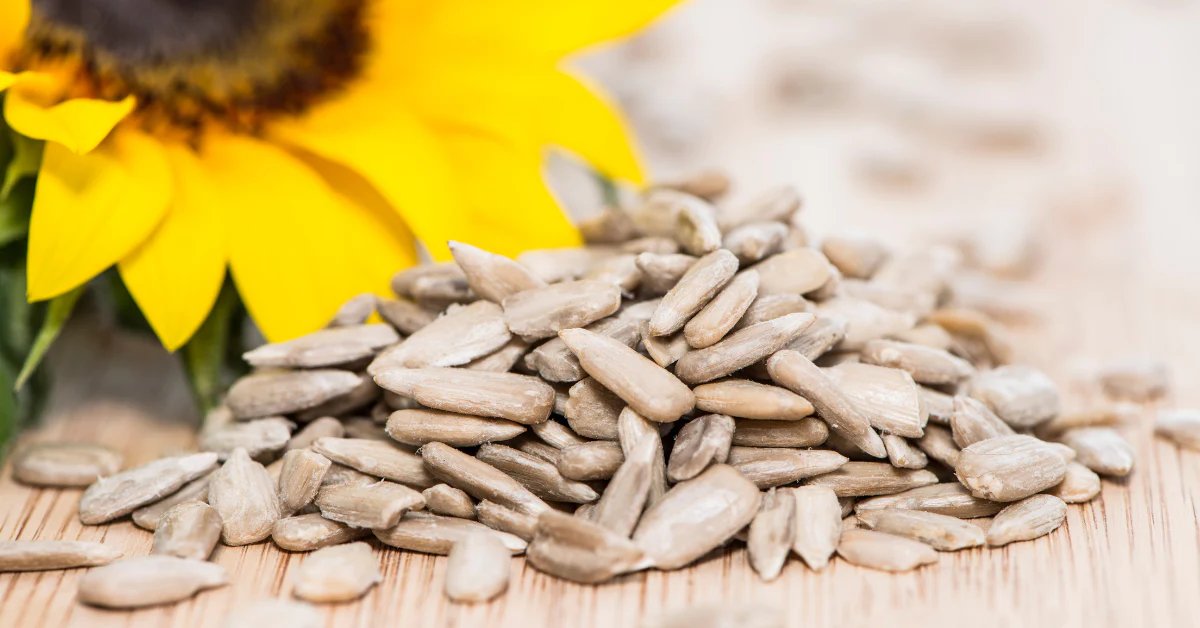
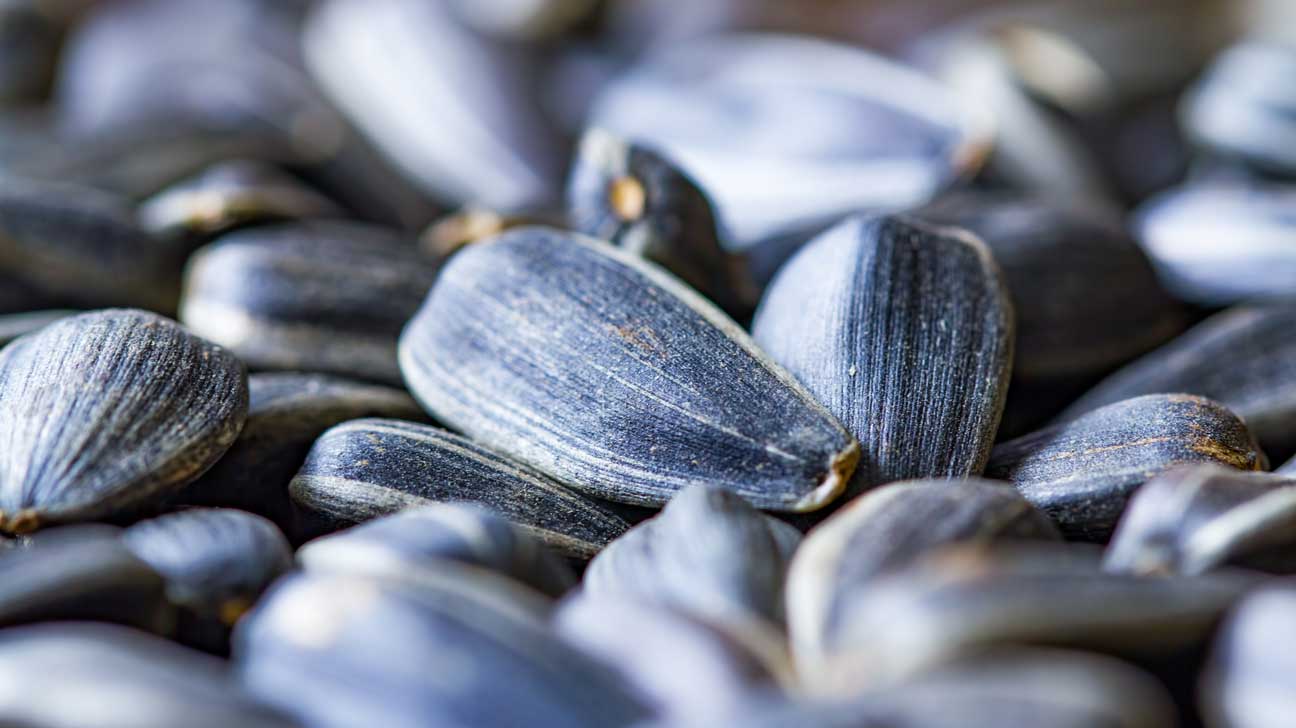
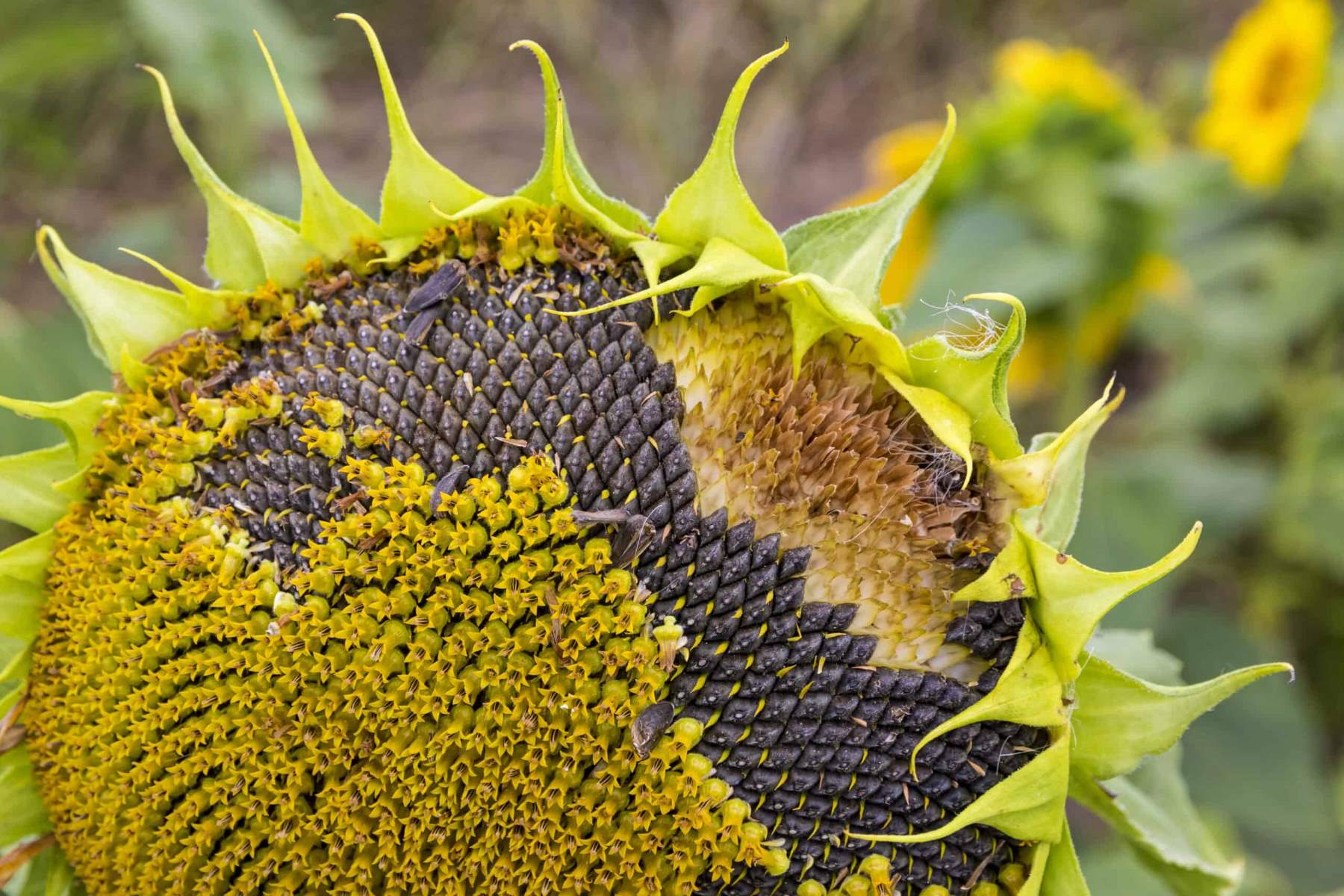
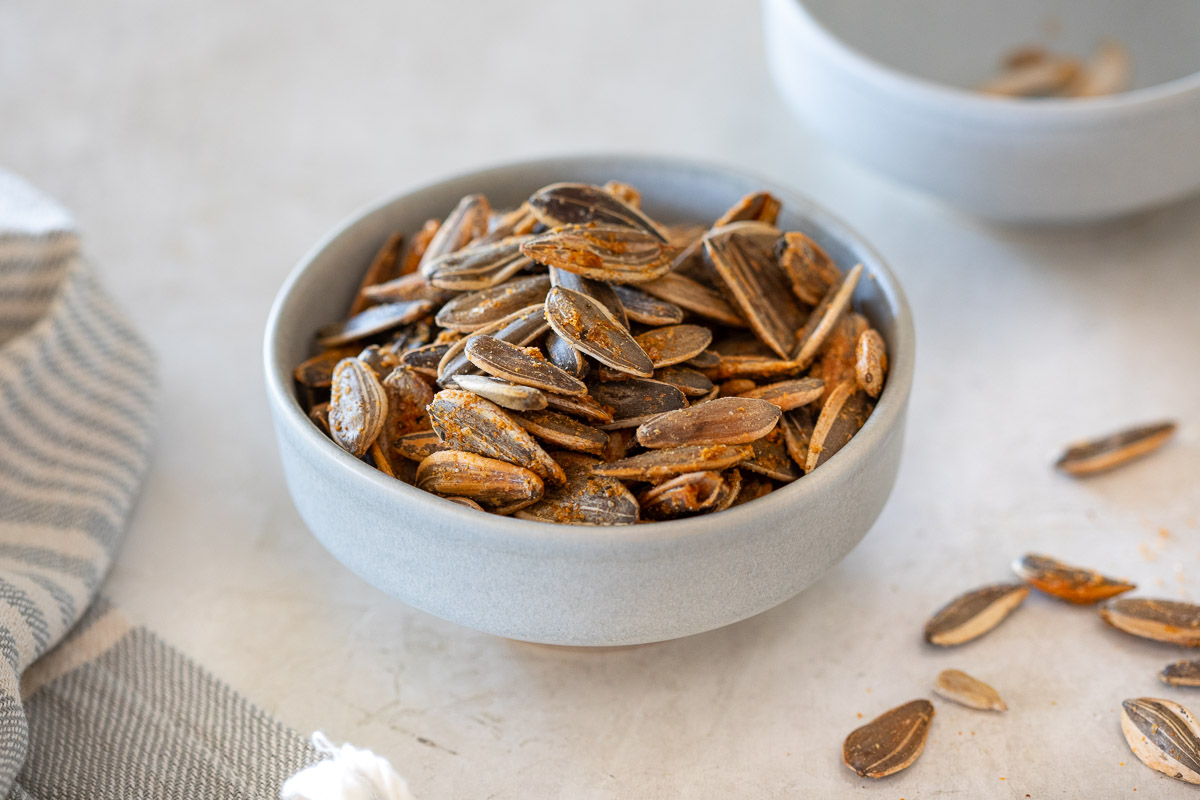

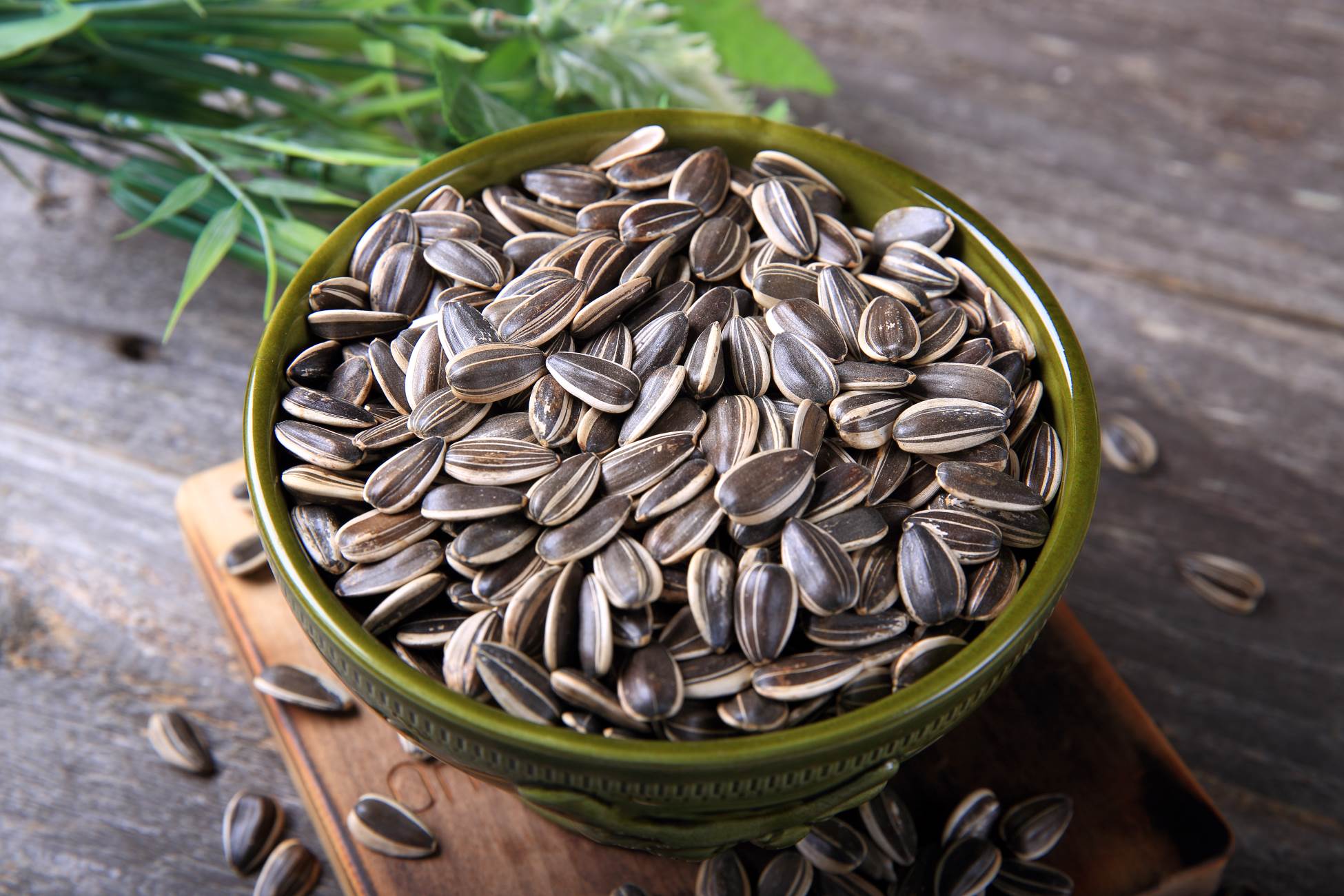
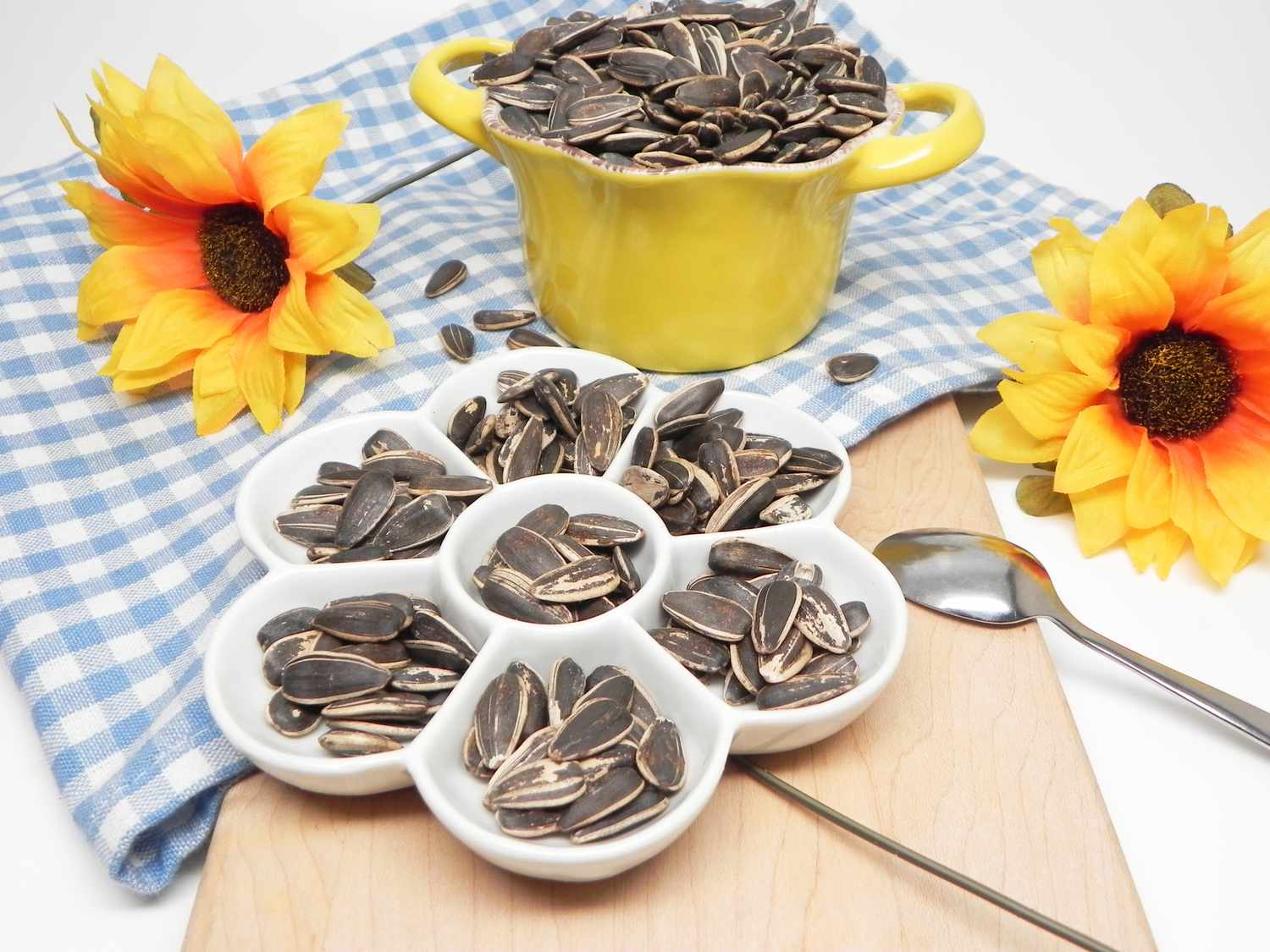

0 thoughts on “How To Eat Sunflower Seeds”